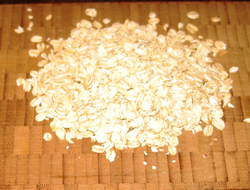Fibre
Published: November 26, 2020
Fibre is the name given to a group of carbohydrates found in plant foods.
Fibres provide structure to the stems, trunks, roots, leaves and skins of plants.
Some fibres are polysaccharides, but unlike starches cannot be broken down to monosaccharides and absorbed by your body. Fibres do not provide you with a direct source of energy.
Dietary fibres are fibres which occur naturally in plants.
Functional fibres are fibres that have been extracted from plants and which are thought to have health benefits. These are often sold as food supplements.
Polysaccharide fibres include cellulose, hemicelluloses, pectins, and gums and mucilages. Lignin is a non-polysaccharide fibre.
Fibres can be soluble (dissolve in water), viscous (form gels), or fermentable (digested by bacteria in your colon). Fibres found in legumes and fruits are thought to protect against heart disease by lowering blood cholesterol and blood glucose levels.
Some fibres are insoluble (do not dissolve in water), are non-viscous and less fermentable.
These fibres are found in grains and vegetables and are associated with improved bowel function and decreased incidence of constipation. There are exceptions since rice bran (insoluble) may lower blood cholesterol and psyllium fibre (soluble) improves bowel function.
The benefits of fibre
Viscous fibres found in oat bran, barley and legumes bind with cholesterol-containing bile acids during your digestive process and promote excretion of bile acids and cholesterol.
Bacteria in your large intestine ferment fibre which may inhibit liver production of cholesterol. Viscous fibre is associated with the overall effect of lowering blood cholesterol.
Higher dietary intakes of dietary fibre may have the effect of lowering the amount of fat that you consume and may create a feeling of fullness.
Diets high in fibre are associated with decreased risk of heart disease and may benefit weight management.
Fibre also slows the absorption of glucose into your blood and can help control blood glucose levels and insulin response in people with...link to the full article to learn more.
References
1.
Whitney, E. & Rady Rolfes, S. (2005). Understanding Nutrition. Belmont, CA: Thomson Wadsworth
2.
Gropper, S.S., Smith, J.L. & Groff, J.L. (2005). Advanced Nutrition and Human Metabolism (4thEd.). Belmont, CA: Thomson Wadsworth.
3.
Centre for Science in the Public Interest, May 2008, September 2007, August, 2010, May 2012, September 2012, January 2013, October 2014


